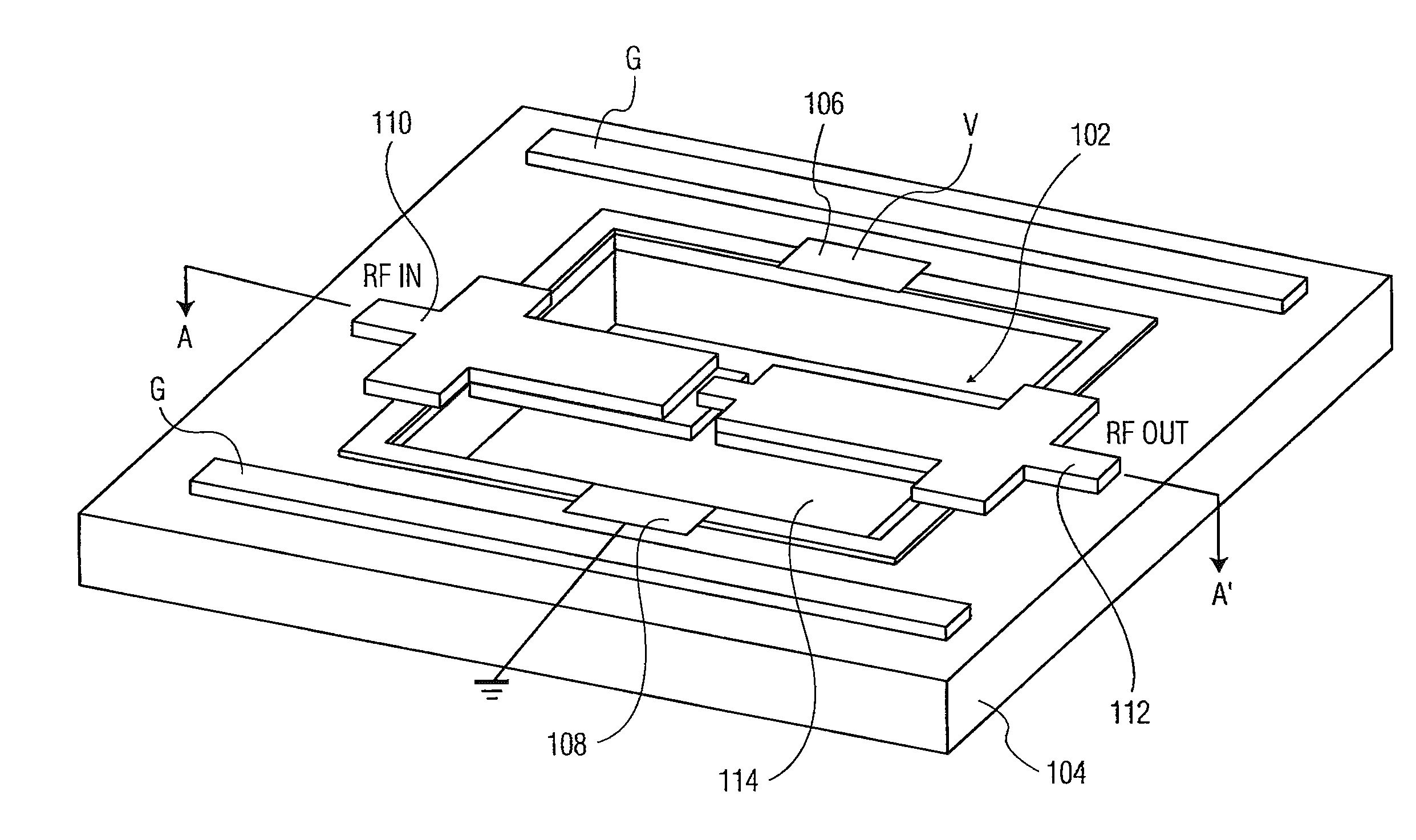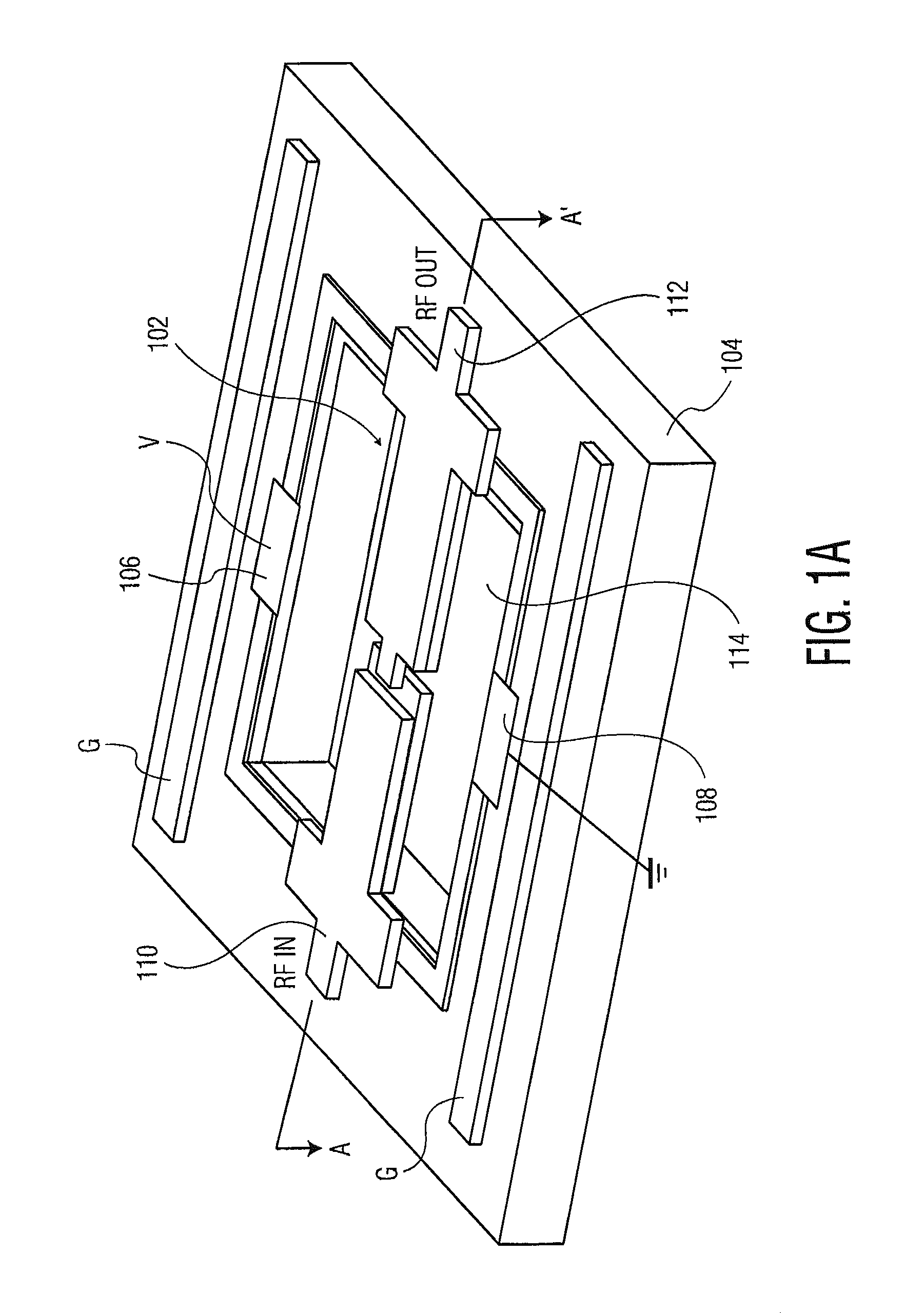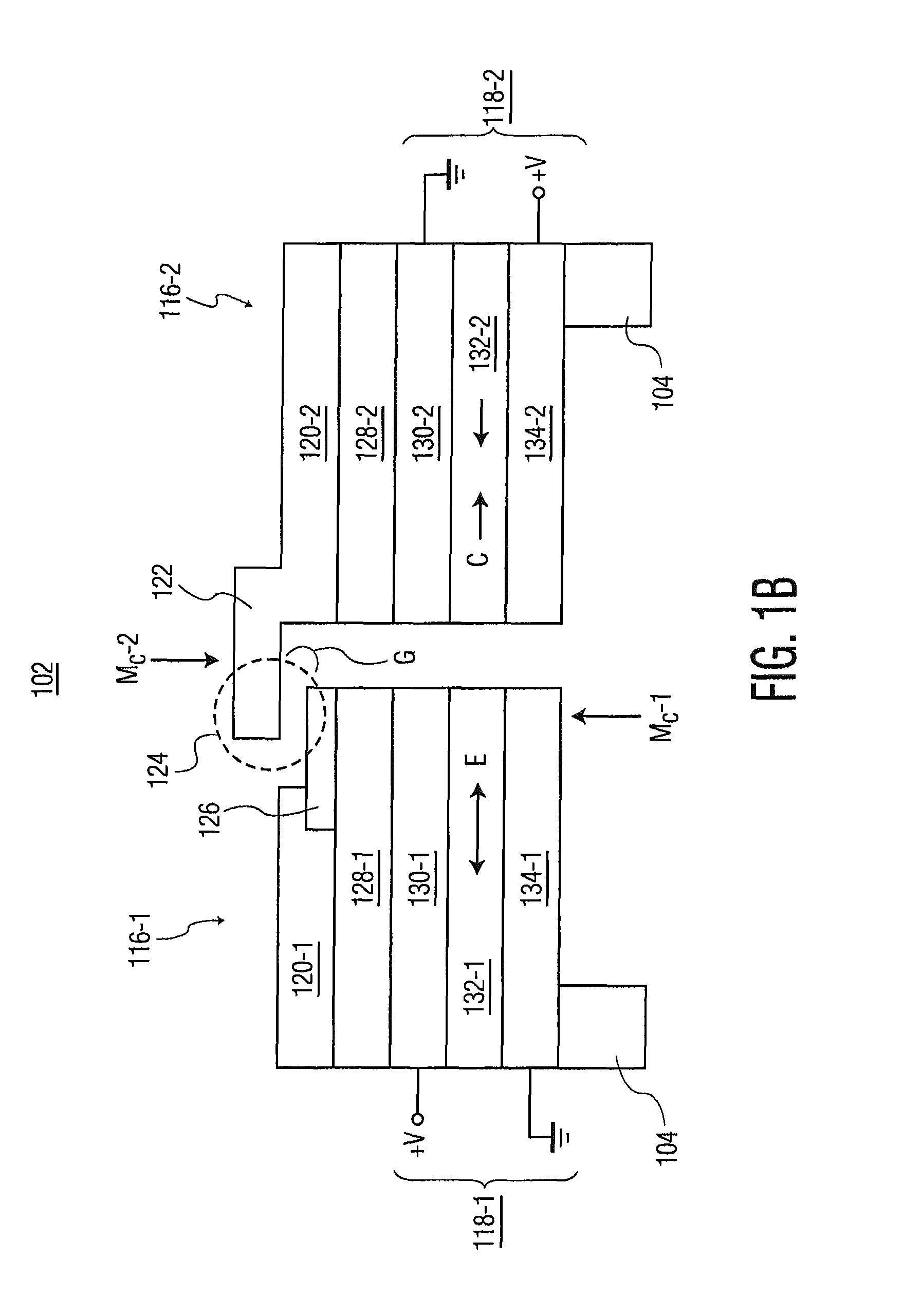Systems and methods for operating piezoelectric switches
a piezoelectric switch and piezoelectric technology, applied in piezoelectric/electrostrictive/magnetostrictive devices, piezoelectric/electrostriction/magnetostriction machines, electrical equipment, etc., can solve the problem that the sub-threshold power consumption of the switch is high
- Summary
- Abstract
- Description
- Claims
- Application Information
AI Technical Summary
Benefits of technology
Problems solved by technology
Method used
Image
Examples
Embodiment Construction
[0038]FIGS. 12-15 illustrate aspects of the present invention relating to exemplary piezoelectric switching systems and exemplary methods of operating piezoelectric switches.
[0039]FIGS. 12 and 13 depict an exemplary piezoelectric switching system 5 in accordance with one aspect of the present invention. As a general overview, piezoelectric switching system 5 includes a first actuator 10, a second actuator 30, and a bias voltage source 50. First and second actuators 10 and 30 may desirably be cantilever beam actuators. First and second actuators 10 and 30 may be coupled to a substrate (not shown) such that a portion of actuators 10 and 30 is suspended from the substrate, allowing actuators 10 and 30 to bend. The illustrated embodiment will now be described below in further detail.
[0040]First actuator 10 includes body electrode 12, a pair of gate electrodes 14 and 15, layers of piezoelectric material 16 and 18, and contact region 20.
[0041]Body electrode 12 is coupled to a bias voltage...
PUM
 Login to View More
Login to View More Abstract
Description
Claims
Application Information
 Login to View More
Login to View More - R&D
- Intellectual Property
- Life Sciences
- Materials
- Tech Scout
- Unparalleled Data Quality
- Higher Quality Content
- 60% Fewer Hallucinations
Browse by: Latest US Patents, China's latest patents, Technical Efficacy Thesaurus, Application Domain, Technology Topic, Popular Technical Reports.
© 2025 PatSnap. All rights reserved.Legal|Privacy policy|Modern Slavery Act Transparency Statement|Sitemap|About US| Contact US: help@patsnap.com



